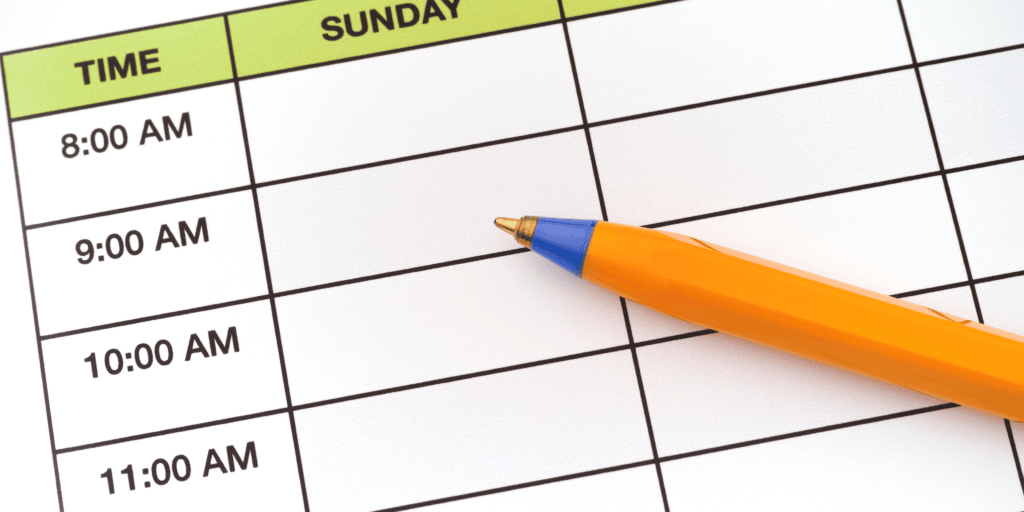Creating the right class schedule is crucial to keeping students engaged and making the learning process more effective. From my experience, a well-planned schedule ensures every lesson flows smoothly and maximizes the use of time and resources.
I’ve seen how good scheduling can help teachers focus on teaching while reducing conflicts that might affect student progress. With the right structure, schools can ensure that classrooms, teachers, and resources are used optimally.
To make this process easier, I recommend using HashMicro’s School Management Software. It comes with complete features to manage schedules, attendance, and tuition payments. Try the free demo today!
Key Takeaways
|
What is Class Schedule?
From my perspective, a class schedule is a structured plan that shows the times and days when different subjects or lessons are held. I find it helps organize learning activities and ensures a clear, consistent routine.
Both students and teachers rely on class schedules to manage their academic responsibilities effectively. Students use it to know what to prepare, while teachers use it to plan lessons and allocate time efficiently.
The Importance of Class Schedules

- Students may have to choose between two overlapping classes despite wanting both.
- Lessons might be too short, and lectures might be cut in half.
- Classes may be too long, causing students to lose concentration.
Teachers value both lecture time and the thorough preparation needed for good teaching. The schedule should balance these two priorities. Ten hours a week are suggested for prep, class follow-up, and peer collaboration. Occasionally, peer observation time must be factored into timetables.
Also Read: 9 Tips to Increase Student Enrollment With University Management System
Types of School Schedules

The period schedule
A period class schedule is a traditional way most schools set up their schedules. This means that students listen to several classes, usually six or seven, a day during the school year. Schools typically last 45–50 minutes, depending on the student’s age and the school.
This approach is ideal for younger students because it fits their shorter attention spans. It also offers chances for consistent learning of the same subjects at the same time each week for the length of the academic year. The use of the best school management software may help.
The block schedule
Block scheduling was first used in the 1970s when middle and high school teachers recognized the need for longer hours of instruction. The average length of a student’s daily class is between ninety minutes to three hours. Blocks of teaching enable lectures, revision, practical application, and feedback to happen simultaneously in the same class.
This approach has up to four blocks of classes daily, and students normally have day A and day B classes on alternating days. Most of the time, as in college, the subjects are different in the first and second semesters of the academic year.
The Complexities of Putting Together a School Schedule

It takes a lot of work and multiple iterations of the timetable to ensure that there are as few conflicts as possible. When preparing schedules, most schools still use the old-fashioned pen-and-paper method, which allows for mistakes or details to be missed that might easily be avoided with a little help from modern-day technology.
Arrange a Class Schedule Using Scheduling Software

There are many options to create a class schedule online, including mobile phone applications and software more suitable for an official school schedule. Using scheduling software is an important aspect of class management.
Even though school scheduling tools are useful, they can never produce the final schedule. They’re helpful at the beginning and save time creating the first draft of the timetable, but adjustments still need to be made.
Furthermore, technological advancements have created software that can streamline school management. The School Management Software from HashMicro makes it easy, fast, and efficient for many staff to do their jobs.
From centralized data on a single platform to optimize student learning and evaluation processes. To automate all administrative tasks, which will improve the efficiency of the school staff.
Also Read: 5 Ways to Increase Your School Management Efficiently
Pros and Cons of Using a Scheduling Software

Pros
- It’s easy to use — The software is designed to be simple and intuitive. Anyone can learn how it works quickly. You don’t have to spend hours trying to figure out how it works before you can use it.
- You can easily make changes — If you decide that you want to switch things around or add more classes, then it’s easy to do because the software makes it simple for users to make changes whenever necessary.
Cons
- Scheduling software could be expensive for small businesses. This product may be too expensive for some institutions, especially low-income ones.
“An effective class schedule is more than just a timetable; it’s a strategic tool that maximizes learning outcomes, balances workloads, and fosters consistency in education.”
— Angela Tan, Regional Manager
Conclusion
From my perspective, class scheduling is a crucial part of effective class management and student attendance. I find that having a clear schedule allows teachers and students to review important dates and events, and students can even use scheduling apps to stay on top of their semester plans.
I’ve also experienced how a HashMicro School Management System can provide all the necessary features to make things easier. It supports staff in handling operations like registration, attendance, and scheduling more efficiently, saving significant time and effort compared to doing everything manually.
With support from the NTUC CTC Grant covering up to 70% of the implementation cost, your institution can take full advantage of this powerful system with greater confidence. Try the free demo right away!

FAQ About Class Schedule
-
What is a class schedule?
A class schedule in schools or colleges is a plan that shows when different subjects are taught during the week. It can also refer to the list of subjects a student takes or the classes a teacher is assigned to teach.
-
Which one is correct: timetable or schedule?
A timetable is a structured and regular plan of events or lessons scheduled at specific times, such as school classes or bus departures. A schedule, on the other hand, is a broader outline of tasks, meetings, or activities, which can be more flexible and personal.
-
What makes schedule and routine different?
A schedule gives the overall framework, showing the main activities planned for the day. A routine refers to the smaller, repeated steps or habits that help carry out each part of that schedule.












